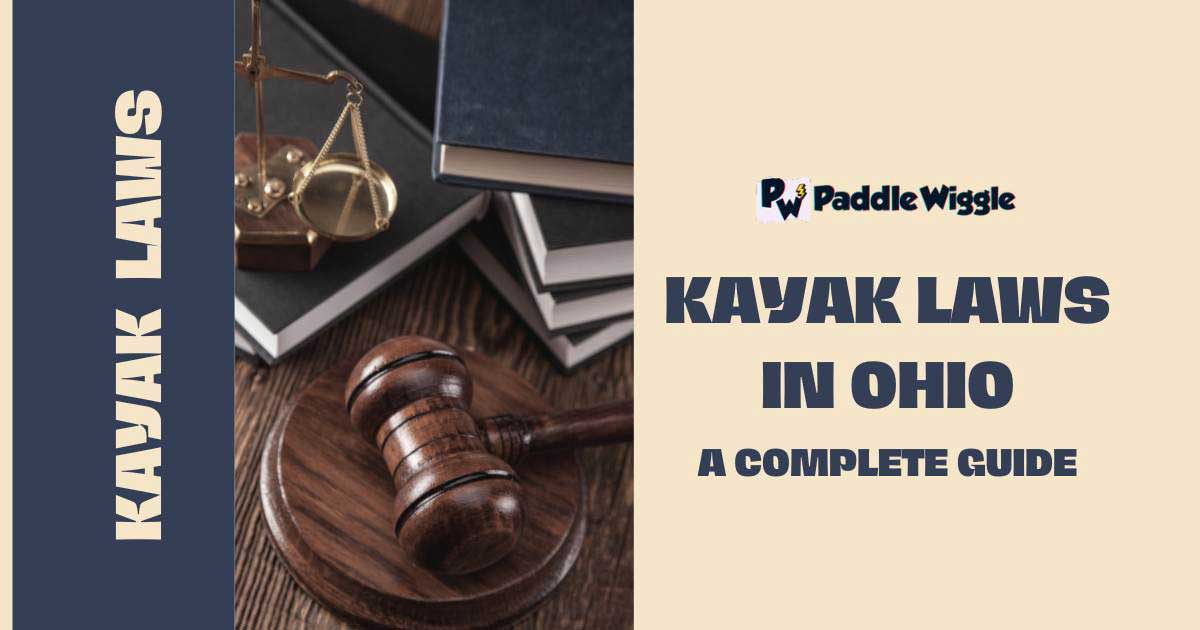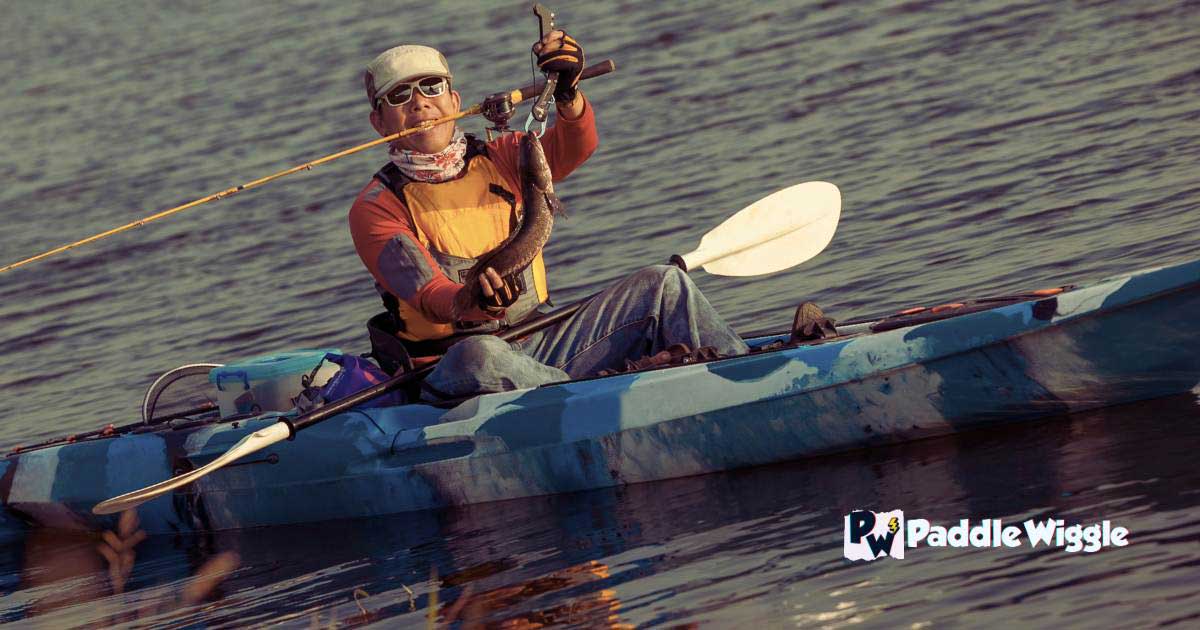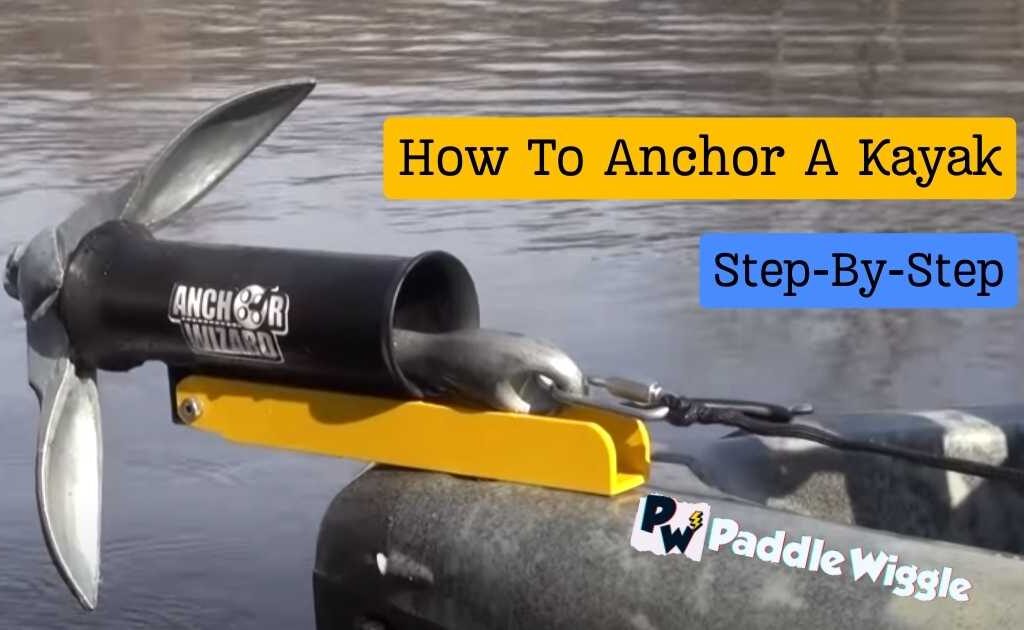Are you planning a kayaking adventure in Ohio? Before you hit the water, it’s essential to understand the laws and regulations that apply to kayaking in the state. Failing to follow these laws can result in fines and, more importantly, can put your safety and the safety of others at risk.
Remember, following these laws is really important! Not only can breaking them result in fines, but it can also be dangerous for you and the people around you. So, take a few minutes to read through this guide, and you’ll be ready to have a fun and safe kayaking adventure in Ohio!
Contents


Kayaking Laws And Regulations In Ohio
Ohio has a set of its own laws. And when you’re planning a kayaking trip, make sure you know them to avoid getting in trouble.
For example, if you’re on Lake Erie, there are specific regulations about noise levels, fishing, and hunting from a kayak. Similarly, the Ohio River has different rules regarding speed limits and other activities.
So, make sure to read through the complete guide and learn more about how to have a fun and hassle-free kayaking trip!
Age restrictions
In Ohio, there are some age restrictions related to kayaking that you should know about.
If you’re under the age of 12, you need to be accompanied by an adult when kayaking. This is to ensure you’re safe and have someone with you who can help in an emergency.
If you’re between the ages of 12 and 16, you can kayak alone, but you need to have completed an approved boating safety course. This will teach you how to stay safe while kayaking and help you understand the rules and regulations that apply to boating in Ohio.
Operating under the influence
In Ohio, it is against the law to operate a kayak under the influence of drugs or alcohol. This means you could face serious consequences if you are caught kayaking while impaired.
The law that covers operating a kayak under the influence is called Ohio Revised Code 1547.11. If you are found guilty of violating this law, you could be fined or even sentenced to jail time.
Not only is kayaking under the influence illegal, but it’s also very dangerous. Alcohol and drugs can impair your judgment and reaction time, leading to water accidents. These accidents can harm you, your passengers, and other people who are kayaking nearby.
So stay sober and avoid using drugs or alcohol before or during your kayaking trip.
Reckless paddling
In Ohio, it is against the law to operate a kayak in a reckless manner. This means that you must follow certain rules and regulations to keep yourself and others safe while on the water.
The law that covers the reckless operation of a kayak is called Ohio Revised Code 1547.07. This law states that you cannot operate a kayak in a way that endangers the safety of others or their property. This includes things like speeding, creating large wakes, or jumping boat wakes.
If you are found guilty of reckless operation of a kayak, you could face fines and other penalties. Additionally, reckless kayaking can be very dangerous and can cause accidents that harm you or others on the water.
Speed limits
In Ohio, there are laws that limit how fast you can kayak in certain areas. The speed limit for watercraft is ten.
According to Chapter 1501:47-3 of the Ohio Administrative Code, when kayaking on inland waters such as lakes, rivers, and streams, you must not exceed a speed of ten miles per hour.
Additionally, on certain bodies of water, such as the Ohio River and Lake Erie, there may be specific speed limits that you need to follow. These limits are often posted and can vary depending on the location.
Lights and signaling
According to the Rev. Code: 1547.03, it’s against the law to use any flashing lights on your kayak in Ohio. This is because flashing lights can confuse and distract other boaters on the water.
This means that you cannot install or use any intermittently flashing lights of any type or color on your kayak while using it in Ohio waters. Operating your kayak in violation of this law can result in fines or other penalties.
So, always ensure that you have the proper lighting on your kayak and avoid using any flashing lights while kayaking in Ohio.
Life Jacket Laws In Ohio
In Ohio, everyone who is kayaking is required by law to wear a properly fitted life jacket at all times while on the water. This law is in place to help keep kayakers safe in case of an accident or emergency.
It states that “no person shall operate or permit to be operated any vessel on the waters in this state unless one wearable”.
In simpler terms, this means that if you are kayaking in Ohio, you must have a life jacket or PFD that is approved by the United States Coast Guard and fits you properly. It should be worn at all times while you are on the water and easily accessible in case of an emergency.
Paddling Restrictions
Ohio has many beautiful waterways that are perfect for kayaking, but it’s important to know where you can and can’t paddle. While you can generally paddle your kayak in most parts of Ohio’s waterways, there are some restricted areas where kayaking is not allowed.
There are certain areas where paddling is not allowed, such as near dams, spillways, and other restricted areas. These areas are marked with signs, buoys, or other markings to let you know that you cannot enter them. These restrictions are in place to keep people safe from hazards like strong currents and turbulent waters.
You could be fined or even face criminal charges if you kayak in a restricted area. The penalties for kayaking in a restricted area in Ohio can vary depending on the specific situation but can include fines of up to $1,000 and possible jail time.
No wake zones
In Ohio, some areas on the water are called “no wake zones.” These zones help to keep other boats, people, and things safe from waves and turbulence caused by boats going too fast.
The Administrative Code 1501:47-3-14 is about how to operate boats safely during floods or when water levels are high. The rule says that you can’t go too fast or drive recklessly or carelessly in a “no wake” zone. You also need to follow any signs or markers posted during these conditions.
The rule also requires that boats stay away from rescue or emergency operations, go slow, and keep their waves small when near shorelines or places where other boats are docked or anchored.
Kayak Trolling Motor Laws In Ohio
In Ohio, if you want to use a trolling motor on your kayak, there are some important rules you need to follow. A trolling motor is a small, electric motor used to help propel a kayak through the water.
Here are some regulations you need to know:
You must have a valid Ohio watercraft registration on your kayak before using a trolling motor on Ohio waters.
The use of gasoline-powered trolling motors is prohibited on certain bodies of water in Ohio. However, electric trolling motors are generally allowed.
The maximum horsepower allowed for trolling motors on Ohio waters is 10 horsepower.
Overview Of Kayak Fishing Laws In Ohio


If you are planning to go kayak fishing in Ohio, there are several laws that you need to be aware of to ensure you stay safe and compliant
Here are some of the main kayak fishing laws in Ohio:
All anglers, including those fishing from a kayak, must have a valid Ohio fishing license. You can purchase a fishing license online or from a licensed vendor. However, if you’re under 16 years, you don’t need to worry about that.
In Ohio, you are not allowed to fish within 100 feet of a dam or other water control structure. Fishing near these structures can be very dangerous due to fast-moving water and hidden hazards.
Kayak Registration Laws in Ohio
In Ohio, registration is indeed required for every recreational boat, regardless of whether it is equipped with a motor or not. This includes kayaks, canoes, powerboats, and even the inflatable kayaks.
However, you don’t need to register paddleboards or kiteboards in Ohio. These are exceptions and do not need to be registered as boats in Ohio.
Kayaks with a motor
If you plan to use a kayak with a motor, including an electric trolling motor, you must register it with the Ohio Department of Natural Resources (ODNR).
Kayaks without a motor
Even if your kayak is not equipped with any motor, you must still register it as a recreational boat with ODNR.
Display of registration
Once registered, you must display your registration decal on the kayak by ODNR rules.
Consequences of Operating an unregistered watercraft


Failure to register your kayak can result in penalties, including fines, impoundment of the watercraft, and possible criminal charges.
And there are several consequences of this. Here are some of the possible outcomes:
Fines
If you use an unregistered watercraft in Ohio, you may be fined by law enforcement. The amount of the fine can vary depending on the circumstances and may range from a few hundred dollars to several thousand dollars.
Legal Issues
Using an unregistered watercraft can lead to legal issues, including impounding your watercraft. You may face criminal charges if you are using an unregistered watercraft with a revoked or suspended registration.
Safety Risks
An unregistered watercraft may not have undergone proper safety inspections, increasing the risk of accidents and injuries on the water. Moreover, an unregistered watercraft may not have the necessary equipment and safety features required by law.
Limited Access
Operating an unregistered watercraft may limit your access to certain waterways. Some waterways in Ohio require a valid watercraft registration to access them, and failure to register your watercraft may prevent you from using them.
Difficulty Reselling
An unregistered watercraft may be difficult to resell since most buyers will want a registered watercraft.
Enforcing Kayak Laws in Ohio
Ohio enforces kayak laws through its state agencies. They are the Ohio Department of Natural Resources (ODNR) and local law enforcement. They usually conduct random checks on watercraft to ensure registration and safety requirements compliance. And they also respond to reports of violations from the public.
If you witness a violation of Ohio’s kayak laws, you can report it to the ODNR’s Division of Parks and Watercraft by calling their toll-free hotline at 1-877-4BOATER (1-877-426-2837). You can also submit violation reports online through their website.
Be sure you provide enough details, including the location, description of the violation, and any identifying information.
Remember, it’s always best to follow the laws and regulations. These laws are established to protect the environment and keep you safe.
Learn More
Do You Need A License For A Kayak In Ohio?
In Ohio, you do not need a license to operate a kayak. However, you may need to register your kayak with the Ohio Department of Natural Resources (ODNR) if it has a trolling motor or is longer than 10 feet.
Do I Need To Take A Boating Safety Course To Kayak In Ohio?
In Ohio, you are not required to take a boating safety course to kayak. However, it is highly recommended that you take a course to learn basic safety guidelines and proper paddling techniques.
How Can I Report Violations Of Ohio’s Kayak Laws?
Suppose you witness a violation of Ohio’s kayak laws. In that case, you can report it to the Ohio Department of Natural Resources (ODNR) Division of Parks and Watercraft by calling their toll-free hotline at 1-877-4BOATER (1-877-426-2837) or by submitting a report online through their website.
Final Words
Kayaking is super cool in Ohio, but you need to make sure you’re doing it safely and following the rules. This means you need to register your kayak, wear a life jacket, and not drink or do drugs while kayaking. It’s also important to be kind and not bother the animals. Taking a boating safety course can help you learn how to kayak safely. However, if you see someone doing something against the rules, you can call or report it online to the Ohio Department of Natural Resources (ODNR).




Thank you for shedding light on the crucial topic. Yes, kayaks have to be registered in Ohio whether they have a trolling motor or not. Additionally, I appreciate how your article emphasizes the importance of responsible kayaking and adherence to safety measures.